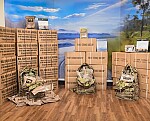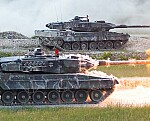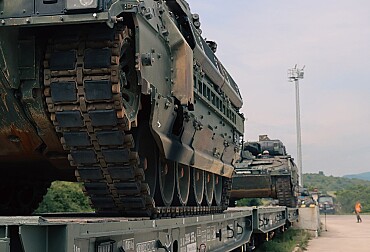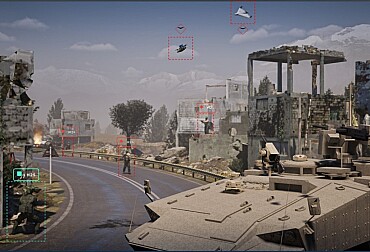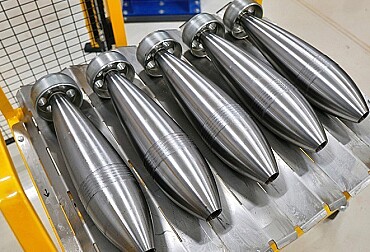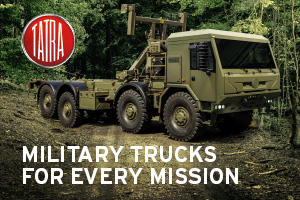US-European rivalry for European markets: in which categories of weapons do European and US companies dominate?
The European arms market has long been one of the most important and strategic areas for the defense industry, both in terms of investment volume and geopolitical significance. The rivalry between the US and European countries, or rather between their defense companies, has become an increasingly visible part of the internal dynamics of Euro-Atlantic relations since the opening of the "Eastern European" markets. Although the United States and European countries are formally allies within the North Atlantic Alliance, there is a quiet but intense competition in the field of arms procurement, the consequences of which go far beyond mere trade. Arms contracts are often linked to issues of national security, strategic autonomy, technological sovereignty, and international political orientation.
This rivalry is particularly evident when European countries are deciding between acquiring American weapons systems and domestic or European production. Although the United States has long enjoyed a technological advantage and extensive export infrastructure, the European defense industry is maintaining or even strengthening its competitiveness in certain areas. Key players on the European side include companies such as Airbus, BAE Systems, Leonardo, Dassault Aviation, and MBDA, while the US market is dominated by companies such as Lockheed Martin, Raytheon, Boeing, and General Dynamics.
Categorization of weapons and dominance of American or European companies
The rivalry between American and European companies on the European arms market is most evident in selected categories of weapons that form the core of the military capabilities of modern armies. Individual sectors differ in terms of the level of competition, technological development, export policies, and the degree of dependence on alliance commitments.
Aviation
The most visible form of US-European rivalry is undoubtedly in the field of combat aircraft. The United States enjoys clear dominance here, primarily through the fifth-generation F-35 Lightning II fighter jet, developed and manufactured by Lockheed Martin. By 2025, the F-35 had been ordered or was already in service with a number of militarily significant European countries, including the United Kingdom, Italy, the Netherlands, Norway, Denmark, Poland, the Czech Republic, Germany, Greece, Finland, and Romania. The decision of some countries to favor American technology was often politically motivated, even at the cost of weakening European manufacturing capacity.
In this context, European competition relies mainly on three main types of fighter jets: the French Rafale, the Eurofighter Typhoon, and the Gripen. All three types are highly advanced technologically, but they are unable to offer the stealth capabilities of the F-35. It is precisely the absence of a fifth-generation European design that is currently the Achilles heel of European industry. Nevertheless, the above-mentioned fighter aircraft types remain an important choice for countries that emphasize strategic sovereignty and independence from the US military ecosystem, as demonstrated by France, Austria, and Spain. The ongoing development of the sixth-generation European FCAS system, which should strengthen Europe's position in the medium term, also plays an important role.
The situation in the military helicopter sector is more balanced and less clear. European manufacturers, led by Airbus Helicopters and Leonardo, supply a wide range of multi-purpose and attack helicopters, such as the Tiger, NH90, and AW159. The Americans play an important but not dominant role in the European market, unlike in the fighter jet sector. They focus mainly on heavy transport and light and heavy combat types, such as the AH-64 Apache, Bell AH-1, and CH-47 Chinook. The decisions of European armies in this area are often motivated by specific operational needs, with logistical and historical ties also playing a role. As a number of Eastern European members of the alliance still own aging Mi-24/35s, we may soon see a battle between European and American manufacturers for these potential customers, who will need to replace their helicopter fleets.
Ground equipment
In the field of armored equipment, European industry is fully capable of meeting the demands of European NATO countries. The lackluster American position here is embodied mainly by General Dynamics, with its M1 Abrams tank (Poland and Romania) and M2 Bradley combat vehicle (Croatia). Although the M113 is now a relic of the past, it is a reminder of the more glorious days of American armored vehicles in European armies.
Europe's position on the domestic market is almost unshakeable, especially in the field of MBTs, where the Leopard 2 in various modifications reigns supreme in terms of numbers. In addition to the proven German design, we can also mention the French Leclerc and British Challenger 2, which, however, mainly satisfy the needs of domestic armies. Another major advantage of European industry is the wide range of IFVs and APCs. This allows European armies to meet their individual needs while supporting regional producers.
Navy
In the naval equipment segment, the US influence on the European market is negligible. The United States is able to offer cutting-edge technologies in the field of sensors, anti-submarine equipment, and missile systems, which are often integrated into European ship platforms. However, the ships themselves are mostly built in domestic shipyards in Europe. European naval companies such as France's Naval Group, Italy's Fincantieri, Germany's ThyssenKrupp Marine Systems, and Spain's Navantia maintain a strong position in the production of frigates, corvettes, and submarines. Nevertheless, American designs are occasionally used, for example in the export of American weapons to equip European ships. Nevertheless, it can be said that the maritime sector remains one of the few segments where European industry has maintained a significant degree of self-sufficiency and competitiveness, thanks in part to its historical traditions and ability to offer comprehensive solutions.
Drones and unmanned systems
Unmanned aerial systems have become one of the fastest growing segments of the defense industry. The US industry dominates this field, mainly thanks to platforms such as the MQ-9 Reaper, developed by General Atomics. This type has become the standard for armed drones with long endurance and high payload, and has been adopted by France, Italy, Spain, the Netherlands, and Poland, among others. The advantages of American systems include technological sophistication, proven operational history, and readiness for rapid deployment.
The EuroMALE project, a collaboration between Germany, France, Italy, and Spain, represents Europe's attempt to create a competitive system. The goal of this program is to create a European armed unmanned system capable of operating independently of American technology and regulatory restrictions. However, the development of EuroMALE is facing technical and organizational complications, and its introduction into operational service is not expected until the end of the decade at the earliest. Until then, Europe's dependence on US unmanned systems will remain significant.
Small arms
The handgun market is the most decentralized. Many countries rely on domestic production if they have sufficient manufacturing and technological capacities. However, there are American and European models that have a significant position on the European market. These include Glock pistols, M2 and M60 machine guns, FN Minimi assault rifles, and MP5 submachine guns.
Air defense
Air defense is an increasingly important segment of modern military equipment, especially in the context of new threats such as ballistic missiles, cruise missiles, and unmanned aerial vehicles. This highly technology-intensive sector is dominated by US companies, primarily Raytheon and Lockheed Martin, which offer a wide range of systems from tactical to strategic levels. The most widely exported US product is the Patriot PAC-3 system, which has become the standard air and missile defense system in a number of European countries, including Germany, the Netherlands, Romania, Poland, and Sweden. In Central and Eastern Europe, there is also strong political motivation to purchase the American system, not only for interoperability within NATO, but also as an expression of loyalty to the United States in foreign policy.
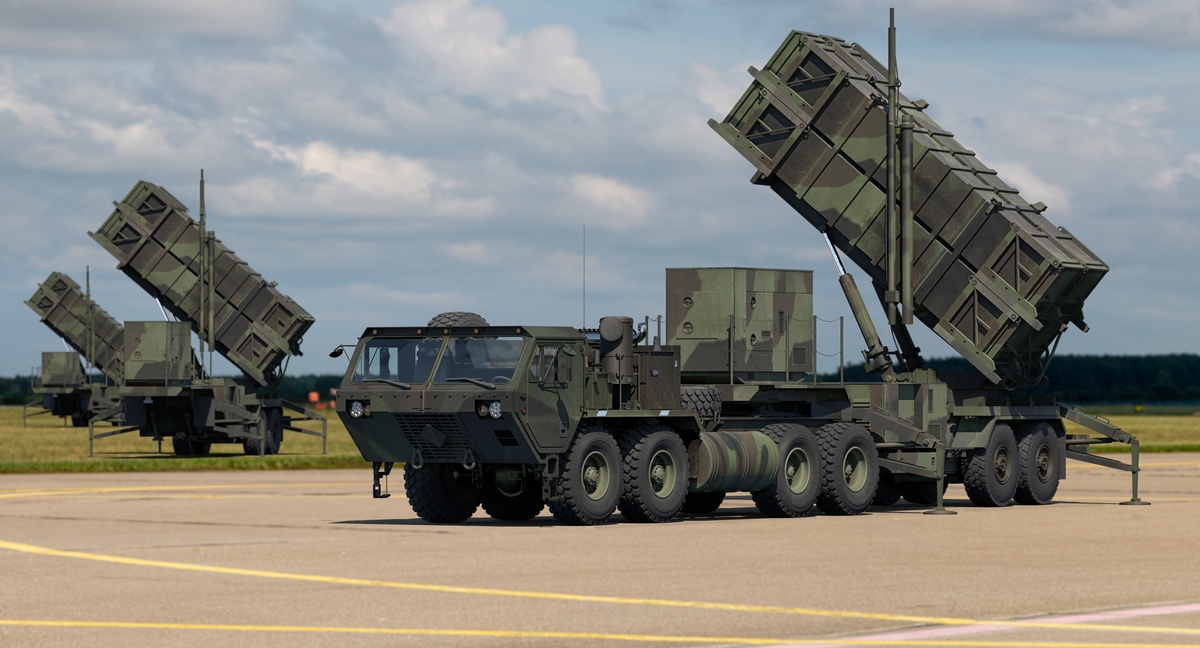
European industry is not toothless in the field of air defense. Companies such as MBDA, Diehl Defence, and France's Thales are involved in the development and production of modern short- and medium-range systems such as MICA VL, CAMM, and IRIS-T SLM. The German IRIS-T SLM system, which has proven itself in Ukraine, has become an example of European success in this sector in recent years. The tension between European strategic autonomy and technological dependence on the US is also clearly evident in the field of air defense. Although European companies are able to offer high-quality solutions at the tactical and operational levels, in the field of strategic air defense—i.e., the ability to intercept ballistic missiles in higher atmospheric layers—Europe remains fundamentally dependent on US systems. This situation is also reflected in the failure of some European efforts to create an alternative to the Patriot system. The current situation is thus leading to a rift between countries that want to strengthen European sovereignty through domestic development (e.g., Germany, France) and those that rely on proven US technology as part of broader geopolitical ties.



